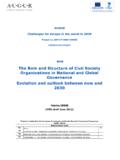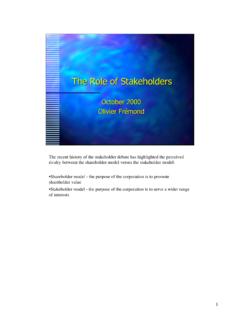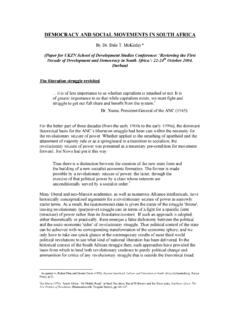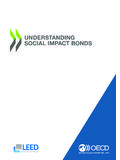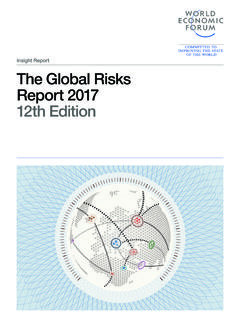Transcription of The Role of Local Institutions and their Interaction …
1 The Role of Local Institutions and their Interaction in disaster Risk mitigation : a Literature Review By Norman M. Messer September 2003 The Role of Local Institutions and their Interaction in disaster Risk mitigation : a Literature Review Norman M. Messer 1. 2 2. Background and 2 3. Conceptual Background and Working Definitions .. 3 4. Objective, Methodology and 6 5. Overview of Local Institutional Responses to Natural Disasters .. 7 6. The Legal and Regulatory Environment: Implications of Sectoral 8 7. The Promise of Decentralisation .. 9 8. Community-Based Self-Help Approaches and Other Civil Society Initiatives .. 12 9. Horizontal and Vertical Institutional interactions at Local -, Meso-, and Macro Levels .. 14 10. Mapping Local Institutions in the disaster Risk mitigation Cycle.
2 15 Preparedness: Insurance .. 15 mitigation : Microfinance Institutions .. 16 11. Elements of a Typology of Successful Local Institutions in disaster Risk mitigation .. 20 12. How to Facilitate Institutional Linkages and foster a Collaborative Approach .. 21 13. Impact of the Wider Local Institutional 23 14. Some Differences Related to Types of 25 15. Contribution of the Natural Sciences to DRM and Interdisciplinarity in NRM .. 26 16. Household Level Poverty Constraints to DRM .. 27 17. Participatory Planning and Technology 29 The Role of Technical Assistance: Community Hazard and Vulnerability Mapping29 Communication and Information Dissemination 30 18. Tools that can be used at the Meso and Macro Levels: The Importance of the Organisational Framework for Working with Local Actors.
3 31 19. Towards an Enabling Environment for Local Institutional Development in DRM .. 34 20. The Role of National Governments and the International Community .. 37 21. Implications for 38 ..In Agricultural .. 38 ..In Natural Resource .. 38 ..In Training .. 40 22. Linking disaster Risk mitigation with Long-Term Sustainable Rural 40 23. Some Policy Recommendations summed up: Best Practices and Lessons Learned .. 42 24. Concluding remarks .. 45 25. References .. 46 26. Web Summary .. 52 Summary Matrix of selected best practices by actor and emergency phase .. 55 Terms of Reference .. 56 21. Introduction The present paper is a non-academic and thus, hopefully, unpretentious, attempt at reviewing the literature on the the role of Local Institutions and their Interaction in disaster risk mitigation (DRM).
4 The motivation for immediately cautioning the reader from the outset about the less than revolutionary character of this review is twofold: first, it is based on the appreciation that, unfortunately, there exist relatively few documented Local experiences which are, honestly speaking, innovative and worth writing home about a lot of disaster management is still organised almost exclusively by the military and/or central government; second, a deliberate attempt is made to keep away from the dev-speak jargon that has come to beset many recent laudible contributions to the development policy debate (such as the Sustainable Livelihoods framework), so that those (under pressure to keep) looking for new frameworks and methodo-logies will remain largely disappointed.
5 On the other hand, what will be found on the following pages is a non-exhaustive compendium of strengths and limitations of Local Institutions involved in DRM and some suggestions for tapping the former and tackling the latter. As recently as the late 1990s, scholars complained of the absence of much social science research on disasters in developing countries (Quarantelli, 1998: 35). There is still a relative dearth of research and (electronically available) information, in particular from from Sub-Saharan Africa, and, while the situation is better in the case of Asia, the present review draws a lot of examples from Central America. Not least, this is because in the 1990s, Central America has played a pilot role in efforts aimed at reducing natural disasters and has thereby achieved important progress not only in conceptual but also in practical terms.
6 For this to occur, one of the essential features is the acknowledgement of the Local -, and, especially, the Local government, level in preventing natural disasters and the involvement of Local stakeholders that this implies (Bollin, 2003: 5 [transl. by author])1. To this must be added the tremendous impact in 1998 of hurricane Mitch and of the 2001 El Salvador earthquakes which, widely covered by the media, boosted awareness and catalysed changes in attitudes towards more proactive stances. 2. Background and Justification There is evidence to suggest that in many countries there has been an increase in the risk of natural disasters occurring - natural hazard risk - due to environmental degradation (World Bank 2002).
7 Natural disasters are complex and multifaceted events resulting from mismanaged and unmanaged risks that reflect current conditions and historical factors (Alexander 2000). disaster risk is collective in its origin and remains mainly a public, shared risk that makes finding individual, and often community solutions, difficult (Comfort 1999). A disaster is said to take place precisely because the losses originated by a given event overwhelm the capacity of a population ( Local , regional or national) to respond and recover from it. disaster risk emerges from the Interaction between a natural hazard - the external risk factor - and vulnerability - the internal risk factor (Cardona 2001). International consciousness raising about integrated disaster risk management (of which disaster risk mitigation is a part) was given a boost by the recently concluded United Nations International Decade for Natural disaster Reduction (IDNDR 1990-1999).
8 The World Food Summit in 1996 recommended support for disaster prevention and preparedness as a priority area of intervention. The FAO of the UN, through its Rural Institutions and Participation Service (SDAR) promotes community based approaches and bottom-up capacity building 1 There, the period from 2000 to 2004 was declared the Half-Decade of Intensified Efforts at Reducing Disasters. The Strengthening of Local structures for disaster prevention is one of the explicit action areas of this initiative. 3processes through participatory analysis and the dissemination (and facilitating adaptation) of new concepts and training materials that help strengthening Local public Institutions and civil society organisations such as farmer organisations, pastoral herder associations, cooperatives, and water user associations (FAO, : 4).
9 It is within this context that increases in natural hazard risk are addressed, given that there is growing evidence of the urgent need to involve human resources, Local population groups and their organisations, in more vertically and horizontally integrated efforts at DRM. The task of exploring avenues for doing so, based on existing experiences and distilling lessons there from, thus lies with the mandate of FAO/SDAR, who commissioned the present literature review, and who are also carrying out a series of complementary field-level case studies in a number of countries in several disaster -prone developing regions. 3. Conceptual Background and Working Definitions The conceptual and methodological underpinning (see FAO, ) of this report recognises that the effectiveness of any risk mitigation strategy will depend on the nature of the risks , household, population group and institutional characteristics, and the availability and range of risk management alternatives.
10 In reference to Local Institutions , risk strategies are assessed considering the type of instruments used by the poor and near poor, the degree of formality or informality of these instruments, and the type of actors and Institutions that have typically supplied or supported these instruments. The issues (listed in the six bullet points in the next section) below are thus approached with a clear commitment towards improving rural livelihoods by better understanding and supporting people s organisations. The International Strategy for disaster Reduction (Geneva 2001) defines a disaster as a serious disruption of the functioning of society, causing widespread human, material or environmental losses which exceed the ability of affected society to cope using only its own resources.










